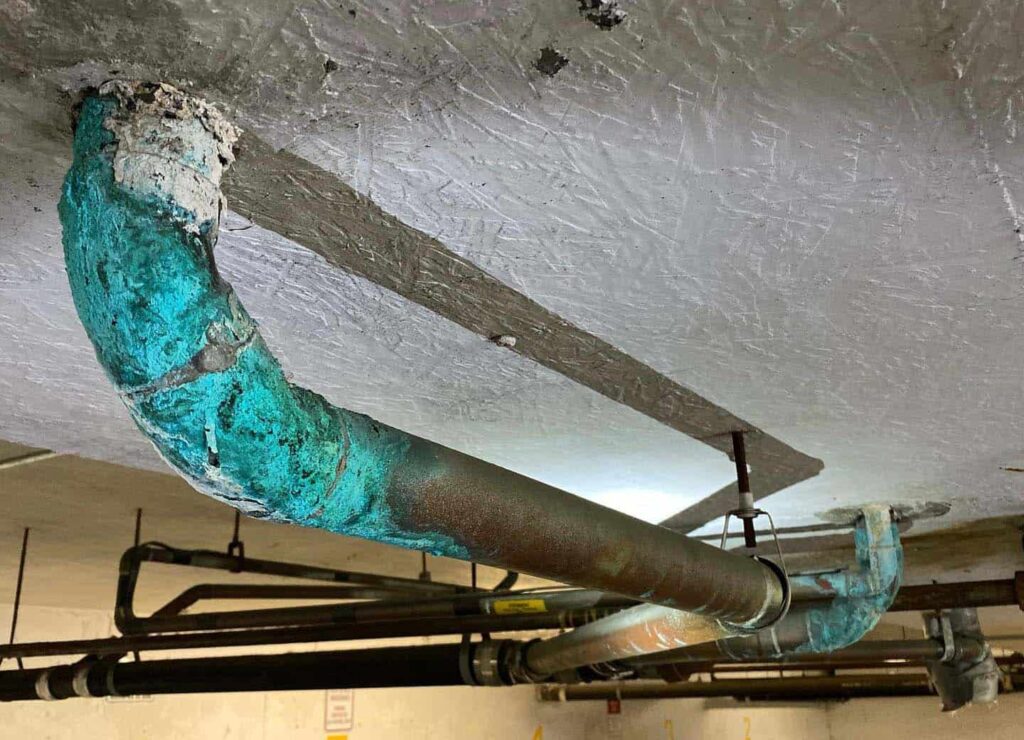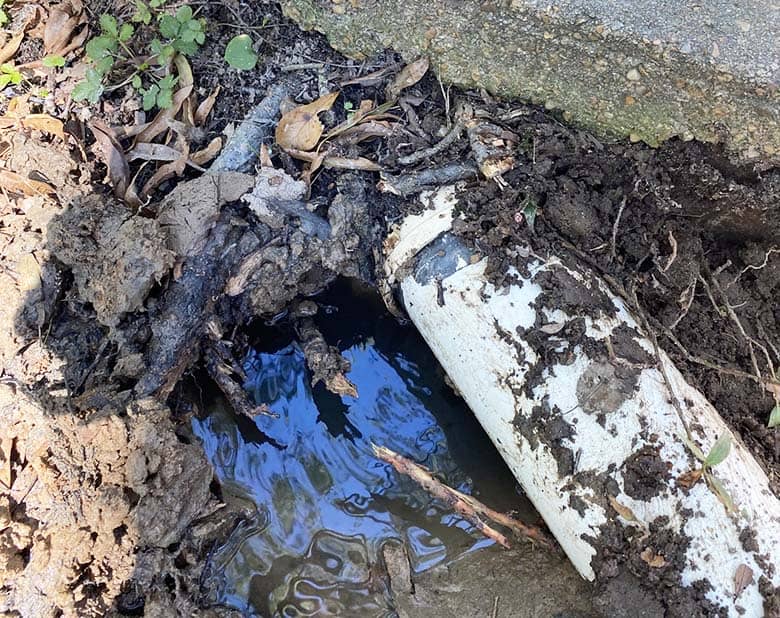The sewer pipe and basement of our homes are so interconnected that slight damage hurt us badly. Yes, the basement leak around the sewer pipe is unpleasant and unhygienic. The basement will become moist and damp. Plus, you will see filthy water around the basement wall and sniff lousy odor from the sewerage.
None of these incidents are ideal for any residential or commercial property. Hence, you should first inspect the causes of the leaky sewer pipe and fix it accordingly. Usually, a sewer pipe leaks due to corrosion, damages, and blockages around it.
Use thread tape and hydraulic cement to seal the sewer pipe temporarily. We will discuss the basement sewer line sealing process, reasons, and signs of leaks in today’s post. So, stick with us if you wish to eliminate such unpleasant moments.
Why Does Basement Leak Around Sewer Pipe?
The sewer pipe leaking around the base happens for several reasons. Usually, in older homes, sewer line becomes too old and becomes rusty. Also, sometimes tree roots damage the pipe from the inside to cause leaks.
Old Pipes:
Previously, older homes used metal pipes for their sewerage system. With years, these pipes will catch rust and start eroding. Plus, plastic pipes have 15 to 20 years of lifespan. After that, these pipes will start wearing out too.
As the pipes get old and wear out, tiny holes will be around them. The holes appear around the basement. So, you will see water leakage in your parking lot, garage, or right around the walls.
Rust and Corrosion:

Many PVC or metal pipe manufacturer claims their pipes are waterproof. Yet, with time, UV elements and weather take their toll on these pipes. The rains, storms, residues, and rust development on the pipes cause severe corrosion.
As the corrosion becomes too much, the pipes slowly start leaking. You will see seepage, dampness, and filthy substances around the basement wall as it happens.
Damage Due to Tree Roots:
One of the main reasons for leaks in the sewer line around the basement is tree roots. The roots of larger trees often enter the sewer lines to cause damage. Hence, you will see hairline-like damages in the sewerage line.
It is not extensive damage but enough to leak water to dampen the basement. So, you must check it too.
Signs Of Sewer Pipe Leaking In Basement

A leaky basement with a damaged sewer line is the least common in residential and commercial spaces. As you suspect leaks in the sewer pipe, there’re signs to confirm it.
- You might hear the sound of constantly running water. You must turn off all the faucets and carefully check the basement wall and sewer line. If there’s any leak, you should hear a trickling water sound through the walls and basement.
- The floor will become moist and damp. It is the easiest way to tell if the basement sewer line is leaking.
- There will be an unpleasant odor in your garage or basement area. As the sewerage line sips, mold grows on the damp walls. Plus, filthy substances in the sewerage cause the odor too.
- As the water drips from the damaged sewerage, it can cause ground shifting. You will see cracks in the basement wall and floor when it becomes too apparent.
- At the outside of the basement, grasses and ferns will appear greener and livelier. It happens as they get adequate moisture coming from the sewerage line.
- Finally, the wall and surface will have discoloration issues. As it happens, you will see mold growth and off-colored walls in your home.
You might find multiple of these signs with a close inspection of your basement area. At this point, you have to fix it.
What To Do If Pipe Is Leaking In Basement?
You must act fast whenever you suspect any leaks in the basement pipe. The process includes a few steps which follow as:
- Start checking around the basement wall and floors and its outside. Are there any signs of sewer pipe leaking in the basement?
- When you observe the abovementioned signs, you must inspect the sewer line. Try looking at it closely to find where the leak has happened. Running a professional sewer line video inspection will be helpful.
- You might need to replace the pipes if the damage is too considerable. For hairline damages, you can seal the basement sewer line. We will discuss the sealing process of the damaged sewer line in the next section.
How Do You Seal A Basement Sewer Line?
You will need hydraulic cement to fix the leaks in sewer lines. Hydraulic cement is used for fixing minor to large leaks in masonry and concrete walls along with sewer lines. Sealing the sewer line needs to be rapid to prevent further damage.
Step 1: Locating the damaged pipe section
Start by observing the wall and surface to find the exact point of leaking in the pipe. Once you find the leaky spot, turn off the water supply line of your residential space for a while. Then, blot the wet surface and water with a dry cloth.
If the water from the leak is too much, wait a few minutes. It will slow down the pace, and then you can blot it with a dry cloth.
Step 2: Removing the surrounding wall
The pipe will always be inside the basement wall or floor. So, you have to remove the portion to access the water-sipping pipe part. You must combine the masonry bit with a drill to penetrate the wall. You may also use a chisel.
The penetration will be roughly 1/2 -inch in diameter. It needs to be ¾ to 1-inch deep to access the leak.
Step 3: Removing residues
Sewer lines will always have residues and debris around them. Use a sponge to remove the debris so the hydraulic cement can sit on the pipe properly. You should use a wet sponge to clean off the residues from the sewer pipe.
The dampness on the pipe coming from the sponge helps the hydraulic cement. It allows for increasing the intensity of the bond.
Step 4: Apply hydraulic cement
You now have to use hydraulic cement to seal the leak. Use a putty knife to apply the cement to the pipe. Ensure that the cement touches the basement wall and pipe. Otherwise, it will fail to seal the pipe. You should fill the gap with multiple layers of hydraulic cement.
Since hydraulic cement will harden too quickly, you must finish the project fast. Or else the cement will be wasted. Also, apply expanding foam to fill up larger holes in the pipe. It will reduce the use of cement.
Step 5: Finish the project
You should wait for 24 hours to allow the hydraulic cement to dry off completely. Then, use thread tape over the pipe. Finally, redo the wall or floor finishing to look like the actual one. Feathering the basement wall will also provide better sustainability.
Bottom Line:
Basement leak around sewer pipe isn’t uncommon. The few signs of leaky sewerage are foul odor, dampness in the wall, and sipping water. You must seal it with plumbing putty or hydraulic cement to continue using the basement and prevent it from further damage.
I am James Martin, An professional plumber with more than 16 years of experience. The main purpose of my writing is to share my experiences of helping others. Be with me and explore bathroom plumbing, installation, cleanness ideas, and many more.




